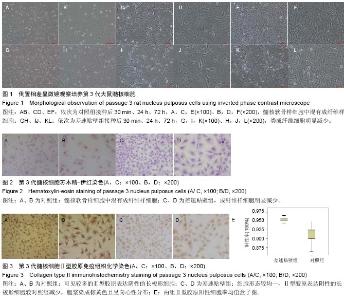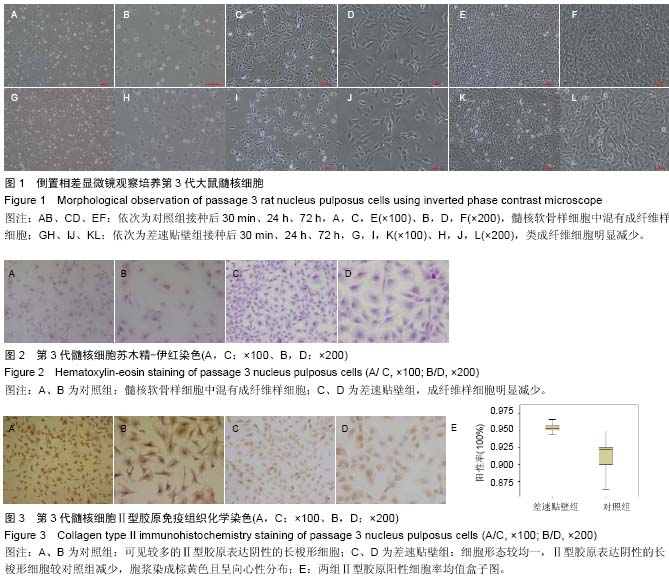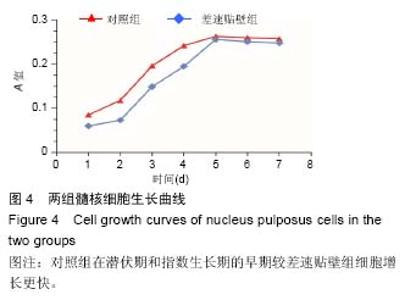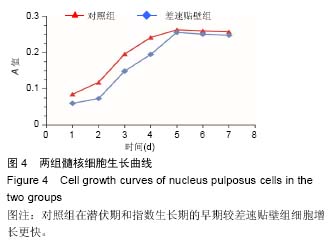| [1] He F, Pei M. Rejuvenation of nucleus pulposus cells using extracellular matrix deposited by synovium-derived stem cells.Spine (Phila Pa 1976). 2012;37(6):459-469.
[2] Zhang WJ, Zhang L, Zhao C M, et al. Effects of rotating cell culture system on constructing of tissue engineering inter- vertebral nucleus pulposus. Zhonghua Yi Xue Za Zhi.2010;90(31):2215-2218.
[3] Horner HA, Roberts S, Bielby RC, et al.Cells from different regions of the intervertebral disc: effect of culture system on matrix expression and cell phenotype. Spine (Phila Pa 1976).2002;27(10):1018-1028.
[4] Wang C,Ruan DK,Zhang C, et al. Effects of adeno-associated virus-2-mediated human BMP-7 gene transfection on the phenotype of nucleus pulposus cells.J Orthop Res.2011;29(6):838-845.
[5] Wang YY, Zhu QS, Wang Y W, et al. Thymosin Beta-4 Recombinant Adenoassociated Virus Enhances Human Nucleus Pulposus Cell Proliferation and Reduces Cell Apoptosis and Senescence. Chin Med J (Engl).2015;128(11):1529-1535.
[6] de la Fuente I, Alcalde I, Gamboa O L, et al. A method for obtaining Schwann cell cultures from adult rabbit nerve based on "in vitro" pre-degeneration and neuregulin treatment. Histol Histopathol.2012;27(1):95-102.
[7] 孙浩林,李淳德.原代培养差速贴壁法分离纯化大鼠腰椎间盘髓核细胞[J]. 中国组织工程研究与临床康复, 2011, 15(46):8569-8573.
[8] Kim JH,Deasy BM,Seo HY,et al.Differentiation of intervertebral notochordal cells through live automated cell imaging system in vitro. Spine (Phila Pa 1976). 2009;34(23):2486-2493.
[9] Hadjipavlou AG, Tzermiadianos MN, Bogduk N, et al. The pathophysiology of disc degeneration: a critical review.J Bone Joint Surg Br. 2008,90(10):1261-1270.
[10] von der Mark K, Gauss V, von der Mark H, et al. Relationship between cell shape and type of collagen synthesised as chondrocytes lose their cartilage phenotype in culture. Nature.1977;267(5611):531-532.
[11] Kluba T, Niemeyer T, Gaissmaier C, et al. Human anulus fibrosis and nucleus pulposus cells of the intervertebral disc: effect of degeneration and culture system on cell phenotype. Spine (Phila Pa 1976). 2005; 30(24):2743-2748.
[12] Hu MH, Hung LW, Yang SH, et al.Lovastatin promotes redifferentiation of human nucleus pulposus cells during expansion in monolayer culture.Artif Organs. 2011;35(4):411-416.
[13] Wang Z, Chen S, Mo H, et al.A simple and economical method in purifying dairy goat luteal cells. Tissue Cell. 2013;45(4):269-274.
[14] Kreider BQ, Messing A, Doan H, et al.Enrichment of Schwann cell cultures from neonatal rat sciatic nerve by differential adhesion.Brain Res. 1981;207(2):433-444.
[15] [Nash HH, Borke RC, Anders JJ. New method of purification for establishing primary cultures of ensheathing cells from the adult olfactory bulb. Glia. 2001;34(2):81-87.
[16] Jankowski RJ,Haluszczak C,Trucco M,et al. Flow cytometric characterization of myogenic cell populations obtained via the preplate technique: potential for rapid isolation of muscle-derived stem cells.Hum Gene Ther. 2001;12(6):619-628.
[17] Nevo Z, Silver J, Chorev Y, et al. Adhesion characteristics of chondrocytes cultured separately and in co-cultures with synovial fibroblasts.Cell Biol Int. 1993;17(3):255-273. |



